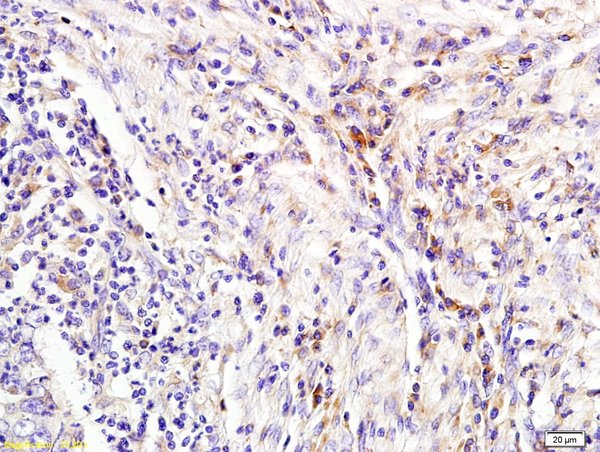
Western blot All lanes: LCN2 antibody at 2microg/ml + Human positive serum Secondary Goat polyclonal to rabbit IgG at 1/15000 dilution Predicted band size: 23 kDa Observed band size: 23 kDa
LCN2 Antibody
CSB-PA06834A0RB
ApplicationsWestern Blot, ELISA
Product group Antibodies
ReactivityHuman
TargetLCN2
Overview
- SupplierCusabio
- Product NameLCN2 Antibody
- Delivery Days Customer20
- ApplicationsWestern Blot, ELISA
- CertificationResearch Use Only
- ClonalityPolyclonal
- ConjugateUnconjugated
- Gene ID3934
- Target nameLCN2
- Target descriptionlipocalin 2
- Target synonyms24p3, MSFI, NGAL, p25, neutrophil gelatinase-associated lipocalin, 25 kDa alpha-2-microglobulin-related subunit of MMP-9, migration-stimulating factor inhibitor, oncogene 24p3, siderocalin LCN2
- HostRabbit
- IsotypeIgG
- Protein IDP80188
- Protein NameNeutrophil gelatinase-associated lipocalin
- Scientific DescriptionIron-trafficking protein involved in multiple processes such as apoptosis, innate immunity and renal development. Binds iron through association with 2,5-dihydroxybenzoic acid (2,5-DHBA), a siderophore that shares structural similarities with bacterial enterobactin, and delivers or removes iron from the cell, depending on the context. Iron-bound form (holo-24p3) is internalized following binding to the SLC22A17 (24p3R) receptor, leading to release of iron and subsequent increase of intracellular iron concentration. In contrast, association of the iron-free form (apo-24p3) with the SLC22A17 (24p3R) receptor is followed by association with an intracellular siderophore, iron chelation and iron transfer to the extracellular medium, thereby reducing intracellular iron concentration. Involved in apoptosis due to interleukin-3 (IL3) deprivation: iron-loaded form increases intracellular iron concentration without promoting apoptosis, while iron-free form decreases intracellular iron levels, inducing expression of the proapoptotic protein BCL2L11/BIM, resulting in apoptosis. Involved in innate immunity, possibly by sequestrating iron, leading to limit bacterial growth.
- ReactivityHuman
- Storage Instruction-20°C or -80°C
- UNSPSC41116161






